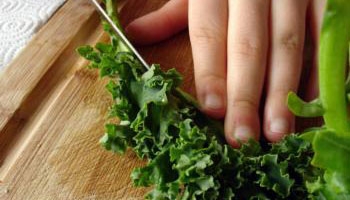Twenty questions that can predict obesity
By asking 20 simple questions about family eating habits, health professionals can help predict the likelihood that young children will become overweight or obese in the future, according to research by UC Agriculture and Natural Resources (UC ANR) scientists.
This knowledge allows professionals to quickly identify where interventions are needed to change behaviors before the children end up with chronic diseases caused by an unhealthy trajectory of weight gain.
The project was a collaborative effort involving the nutrition science laboratory of Marilyn Townsend, UC Cooperative Extension specialist based at UC Davis, and UC Cooperative Extension's Expanded Food and Nutrition Education Program educators. Funding was provided by grants from USDA and UC ANR.
The 20 questions came from a much longer Healthy Kids survey. In creating the survey, the scientists focused on young children in low-income families, which are disproportionately affected by the obesity crisis. The USDA is troubled by statistics that show that, over the last three decades, the rate of overweight and obesity has risen consistently.
Organizations that work with low-income families are eager to determine which families need help to modify their at-home eating practices to ensure a healthier outcome for the children. The wording of the initial versions of survey questions were identified by poring over dozens of peer-reviewed published research reports. Townsend and her staff then conducted numerous interviews with parents to reword questions so that those with literacy issues could understand the meaning as researchers intended.
“Parents have control over the children's environments. They buy the food and serve it. We looked at what parents are doing that might be impacting obesity,” Townsend said.
The researchers identified 23 dietary decisions that parents were making that seemed to contribute to their children's weight gain. The researchers then wrote 48 questions to gauge the 23 behaviors.
Developing an effective questionnaire involved extensive research and testing. Ultimately, the most effective format included pictures that looked like family snapshots, not stock photos, simple language and multiple choice questions. The survey was made available online to agencies that work with low-income families. It works, but it's long.
Streamlining the survey became the Townsend lab's next order of business.
Working with UCCE nutrition, family and consumer sciences advisors, the team recruited 170 children between 2 and 5 years old and their parents. They measured the children's height and weight and took blood samples at three times during the four-year study. The parents also completed the 48-question survey.
“By tracking height and weight, and comparing the changes over time, we got a clear picture which children were on an excessive weight gain trajectory,” Townsend said. “With the blood samples, we were able to look for biomarkers that are indicative of inflammation, which are related to choices in the family environment.”
Using sophisticated statistical analysis, the scientists were able to identify the 20 questions that were most indicative of unhealthful weight gain and higher incidence of biomarkers that indicated low grade inflammation in the children's blood.
|
The 20 questions are:
|




